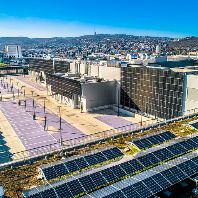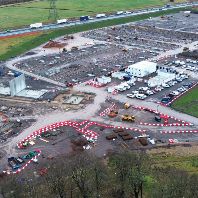Europe's real estate markets turned the corner in 2010, with invested stock increasing by 4% in marked contrast to the previous year's decline of 8%, according to DTZ's flagship 'Money into Property 2011' report. This is forecast to increase further in 2011.
The increase in invested stock varied considerably across Europe, ranging from 1% in the UK to 11% in France. There was one notable area of decline, Portugal, Italy, Ireland, Greece and Spain (PIIGS) posted a 3% fall.
Hans Vrensen, Global Head of Research at DTZ, comments: "Following two years of decline, Europe is returning to a more normal situation with an increase of its invested stock in 2010. We expect the region to continue this positive trend with a 4% increase in 2011. The forecast rise is predominantly a result of capital value growth as some CEE markets are projected to re-price. On the other hand, the contribution to stock growth from the new development pipeline is modest in Europe, in contrast to Asia Pacific where construction is booming."
Investment transaction volumes in Europe rose 64% in 2010, just below the global increase of 76%. Europe is forecast to continue to recover into 2011, with a 20% increase. This is expected to be the fastest regional increase as transaction volumes in Asia Pacific are expected to plateau.
Hans Vrensen, continues: "Recovery in global transaction volumes has been dominated by domestic investment. But in 2010, inter-regional transaction volumes increased by 34%, following two years of substantial decline. This is predominantly non-Europeans investing into Europe, led by international fund managers, focusing on prime, core office and retail markets."
The latest DTZ Fair Value Index (FVI) score for Europe is 32. Following a marked recovery of capital values across the continent, the FVI declined from 60 last year and is indicative of the markets now being more fully priced. This is in contrast to the global FVI currently at 50 showing that markets overall are fairly priced. The office sector saw the biggest recovery in capital values and a consequent decline in its score to 17. In contrast, retail and industrial sectors still offer relatively good value with scores of 40 and 48 respectively.
Tony McGough, Global Head of Forecasting & Strategy Research at DTZ, said: "Investors buying now can still find attractive European opportunities by considering markets outside of the traditional core. More than half of the 99 European markets covered continue to be attractive, with 10 HOT and 43 WARM. CEE markets hold significant investment opportunities with most ranking either WARM or HOT. Among the core markets, London and Frankfurt offices remain at fair value."
Recent research reveals that globally there is US $986 billion of capital available for investment in commercial property over the next three years. EMEA attracts the largest share of this capital (35%) compared to other regions globally. Investors remain confident with 66% expecting an increase in their net investment in 2011. The majority of investors report that they are not finding it difficult to obtain debt finance or source product.
The European debt funding gap stands at US $118 billion over the next three years. This is a 6% reduction from our previous estimate. In Europe, the amount of equity available is 19% higher than the debt funding gap. Consequently there is sufficient equity available to address the gap. Globally DTZ estimates that US $403 billion of equity is available for investment over the next three years, this is nearly double the US $202 billion global debt funding gap over the same period.
Magali Marton, Head of CEMEA Research at DTZ, comments: "Deleveraging in Europe is now well underway. For the first time in over a decade, the average European Loan to Value ratio declined, from 63 to 60%. New non-bank lenders are coming into the markets and thus increasing the number of funding channels and capacity. With a declining funding gap, increasing equity and a more stable economic environment, bridging the European















